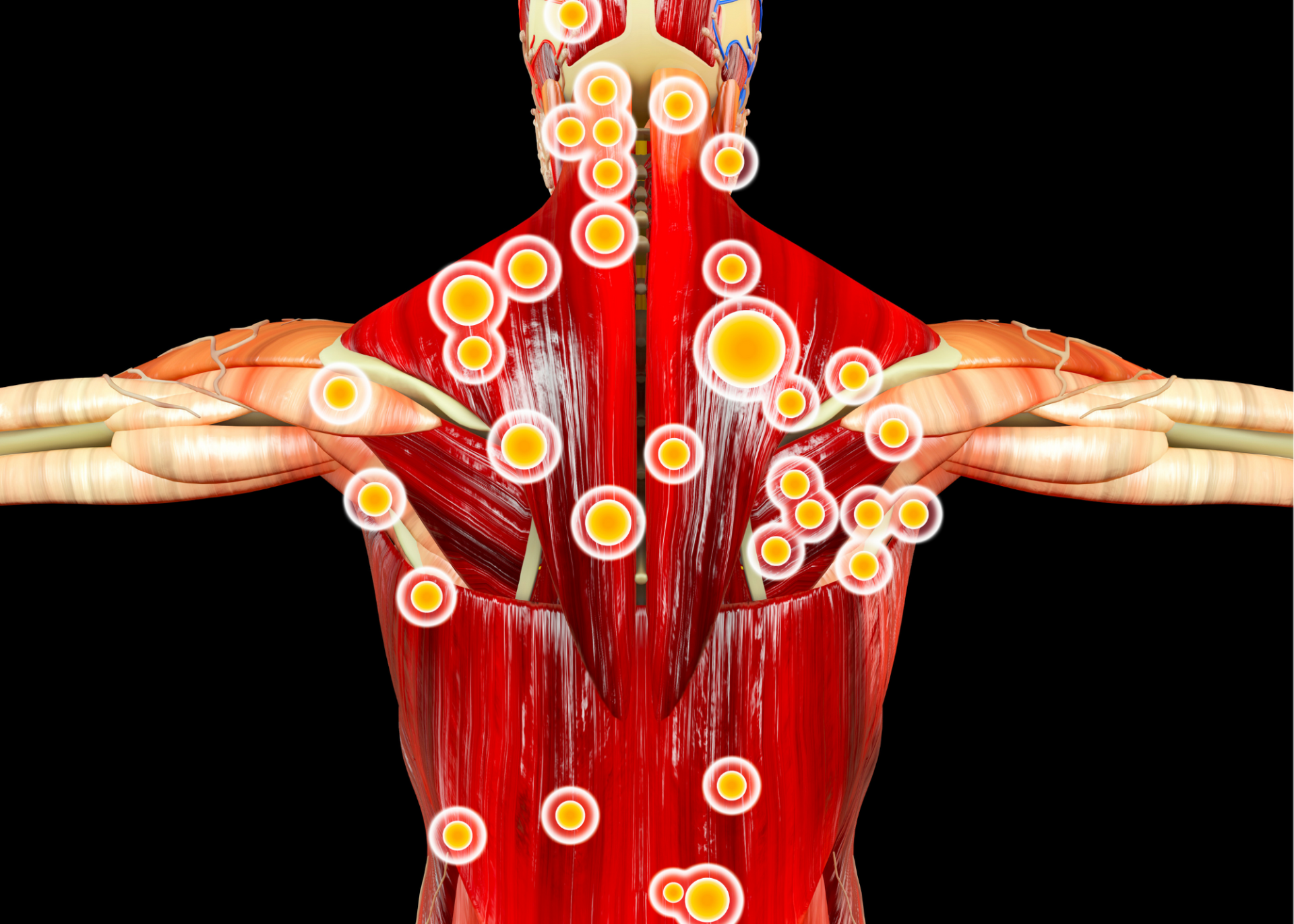Troublesome Trigger Points

What is a Trigger Point?
A trigger point is described as a spot or point in a muscle that sends referred pain or a weak sensation to another part of the body. A pain being felt on the side of the head (precisely behind the ear) could be caused by a trigger point originating in the upper trap muscle.
Trigger points are not unusual and can often occur within any muscle of the body. Those who suffer from trigger points exhibit a decreased motion of that particular muscle group due to persistent pain. The head and neck areas are the most common muscles affected by trigger points. Like a domino effect, this leads to developing other symptoms such as jaw pain, eye pain, headaches and ringing in the ear.
What are the most common causes of Trigger Points?
There are several causes for trigger points, such as:
• Lack of exercise
• Sleep disturbances
• Vitamin deficiencies
• A recent or long-term injury
• Poor posture over long periods
• Work-related or recreational activities that cause repetitive stress
How do I manage the effects of Trigger Points?
There are many ways to manage trigger points, including the following:
• Manual therapy (such as chiropractic care)
• Massage therapy
• Non-invasive modalities such as laser, ultrasound, or a TENS machine (which sends small electrical pulses through the skin to change the way pain signals are sent to the brain)
• Acupuncture treatment
What can I do to prevent or improve issues caused Trigger Points?
• Exercise: Regular, gentle exercise is an integral part of keeping our muscles nimble and preventing them from seizing up.
• Regulate your diet: A proper balance of vitamins and minerals in your diet can help prevent trigger points from happening or getting worse.
• Improve posture: People commonly hold stress and tension in their low back or neck area. Become aware of where you carry your stress and adjust your posture accordingly.
• Get enough sleep: Adequate rest is essential for your body in many ways. Make it a priority to allow your body enough time to restore and repair itself after a day’s worth of activities.
• Stretch:
Always remember to stretch before and after working or playing recreational sports
If you are experiencing persistent muscle or nerve pain, make an appointment to see Dr. Vollrath at Core Chiropractic Center for a complete assessment.



